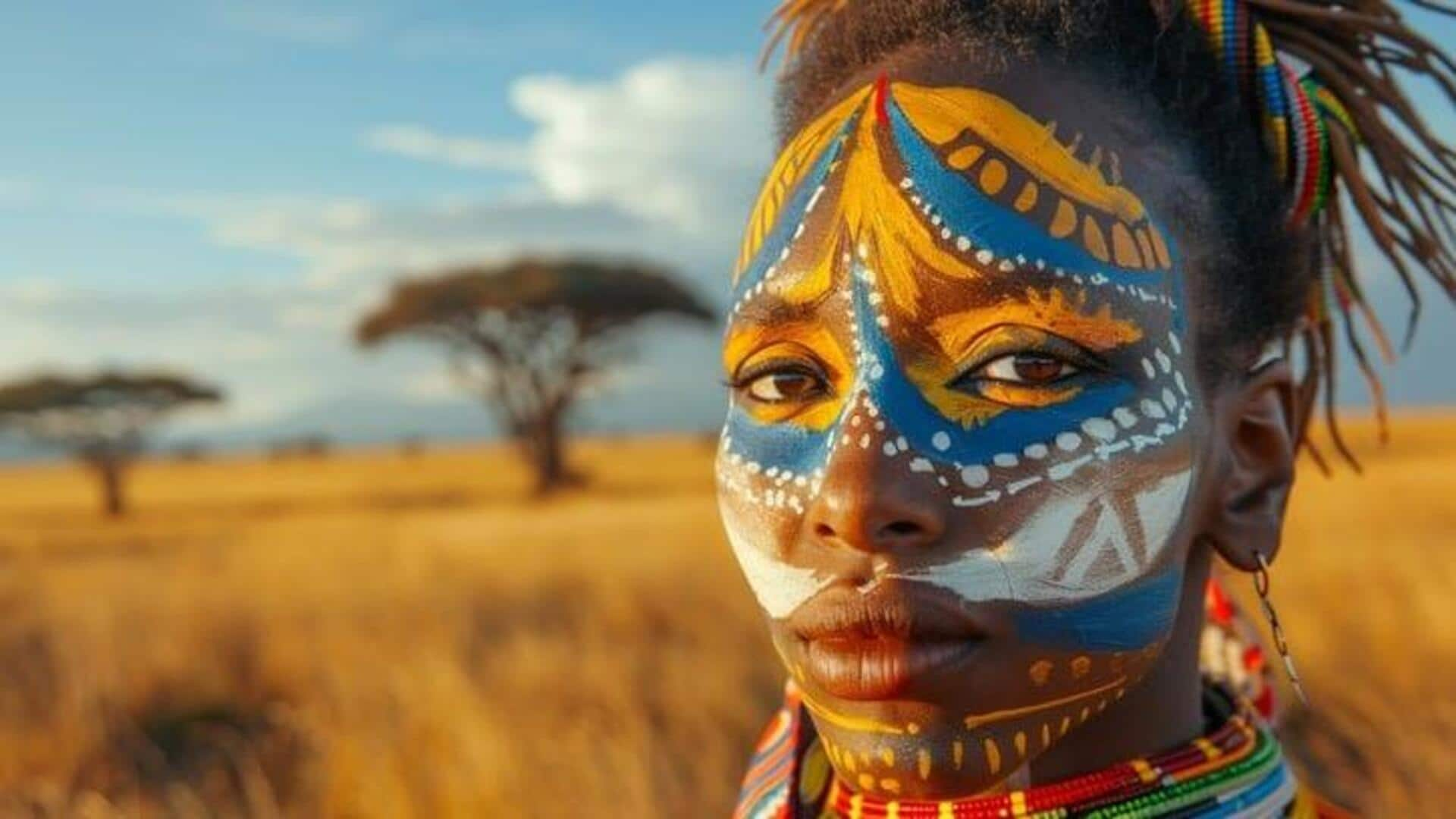
African body art: 5 unique traditions worth exploring
What's the story
African body art traditions are a beautiful testament to the continent's rich cultural heritage. These practices, which have been passed down through generations, are a means of self-expression, identity, and community bonding. From intricate scarification to vibrant body painting, each tradition tells a story of its own. Here are five unique African body art traditions that continue to fascinate and inspire people around the world.
#1
Scarification in West Africa
Scarification is an ancient practice in many West African communities. It involves creating patterns on the skin by cutting or burning. The scars formed are often viewed as symbols of beauty, strength, and social status. In some cultures, scarification is also used to mark important life transitions or achievements. Despite modern influences, the tradition remains deeply rooted in cultural identity.
#2
Body painting among the Himba
The Himba people of Namibia are famous for their unique body painting practices. They use a mixture of otjize paste made from butterfat and ochre pigment to paint their skin. This not only protects them from harsh weather but also serves as a form of artistic expression. Each design can indicate age group, marital status, or social role within the community.
#3
Lip plates among the Mursi
The Mursi tribe in Ethiopia is famous for its lip plates, which are inserted in the lower lip as a part of a coming-of-age ritual. The practice symbolizes maturity and readiness for marriage. The size of the plate can denote social status or personal choice within the tribe. Despite globalization's influence, this tradition remains an integral part of Mursi culture.
#4
Hair braiding traditions across Africa
Hair braiding is not just a styling choice in Africa; it's a cultural statement with deep-rooted traditions across the continent. Each braid style can signify ethnic identity, social standing, or even historical events. From intricate cornrows to elaborate twists, hair braiding is an art form that continues to evolve while retaining its cultural significance.
#5
Beadwork among the Maasai
Beadwork is an integral part of Maasai culture in Kenya and Tanzania. It is used in jewelry and clothing embellishments. Each color combination has meanings related to life events, such as birth or marriage ceremonies. Beadwork serves both decorative and communicative purposes within Maasai communities, showcasing their artistic skills and cultural narratives.